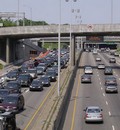Judged by the Alpes-Maritimes prefecture and the Escota company as “very urban and with a tormented relief”, the A8 is one of the black spots of the French motorway network. It is on this note that the measure to limit speed to 110 km/h was taken.
After 6 months of testing between Antibes and Bouche-du-Loup, the effects of this slowdown have been rather positive: a 50% reduction in incidents and accidents, a positive impact on the environment, a reduction in noise levels, and a better distribution of vehicles across motorway lanes. This last consequence can lead, according to Escota, to smoother traffic and a “20% decrease in the number of traffic jams as well as a decrease in their duration and length.”
This measure is also intended to improve the visibility of road signs which alternated between 110 km/h and 130 km/h. Now, it is 110 km/h over the 72 km of motorway covered by the prefectural decree. As for those who think that the limitation extends travel time, a study was conducted by Escota and the Alpes-Maritimes prefecture. According to this study, “to travel the 72 km at 110 km/h, it only takes about 40 minutes.” The journey is only extended by 2 minutes compared to the old limitation.
Well-informed motorists thanks to Escota
Numerous measures have been implemented by the Escota motorway network since July 11 to prepare motorists for this change in maximum speed. Today, most of the signs displaying 130 km/h have been changed. Temporary road signs and construction signs are also present to alert motorists of the new speed limit.
Illuminated signs regularly broadcast the change with messages such as: “July 15, 110 km/h maximum = more comfort.” As for Radio Trafic FM, it also broadcasts a message in three different languages, French, English, and Italian.
It is rare for those using the A8 motorway not to be aware of the new 110 km/h limit in the Alpes-Maritimes. One thing is for sure, this is certainly not the case for the 70,000 subscribers of Escota who have received a visual to warn them of this measure.


